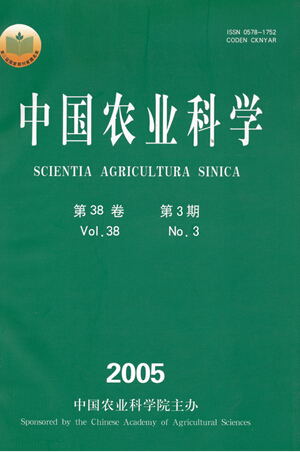-
Profile Distribution and Storage of Soil Organic Carbon in an Aquic Brown Soil as Affected by Land Use
-
Scientia Agricultura Sinica. 2005, 38(03):
544-550 .
-
 Abstract
(
1280 )
Abstract
(
1280 )
 PDF (286KB)
(
990
)
PDF (286KB)
(
990
)
 Save
Save
-
Related Articles |
Metrics
Abstract: Many attempts have been made to estimate the soil organic carbon (SOC) storage under different land uses, especially from the conversion of forest land or grassland into cultivated field, but limited reports were found on the estimation of this storage after cultivated field converted into woodland or grassland, especially in small scales. This study is aimed to investigate the dynamics of SOC concentration, its storage and carbon /nitrogen (C/N) ratio in an aquic brown soil at the Shenyang Experimental Station of Ecology, Chinese Academy of Sciences under four land use patterns over 14 years. The four land use patterns were paddy field (PF), maize field (MF), fallow field (FF) and woodland (WL). In each pedon at 0-150 cm depth, soil samples were collected from ten layers. The results showed that the profile distribution of SOC was different under different land uses, indicating the effect of land use on SOC. Soil organic carbon was significantly related with soil total N, and the correlation was slightly closer in nature ecosystems (with R2=0.990 and P<0.001 in both WL and FF, n=30) than in agroecosystems (with R2=0.976 and P<0.001 in PF, and R2=0.980 and P<0.001 in MF, n=30). The C/N ratio in the profiles decreased generally with depth under the four land use patterns, and was comparatively higher in WL and lower in PF. The C/N ratio of the FF was closer to that in the same soil depths of MF than to that of PF. Within 100 cm depth, the annual sequestration of SOC was 4.25, 2.87, and 4.48 t·ha-1 more in WL than in PF, MF and FF, the annual increase rate of SOC being 6.15 %, 3.26 %, and 5.09 %, respectively. As a result, the SOC storage was significantly greater in WL than other three land use patterns(P=0.001, 0.008, and 0.008). As compared with PF, MF, and FF, respectively, while there was no significant difference among the other three land uses. It is suggested that woodland has a
great potential in making a significant contribution to C storage and environmental quality.









